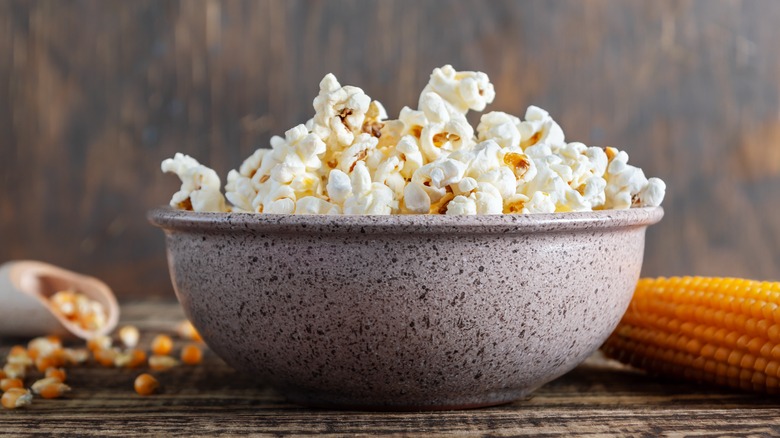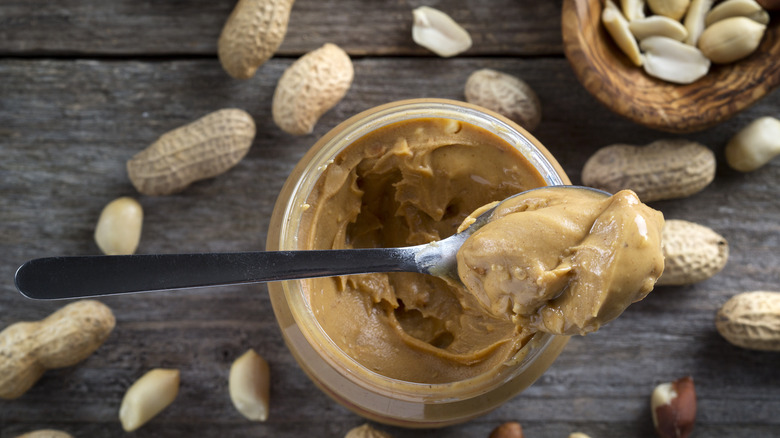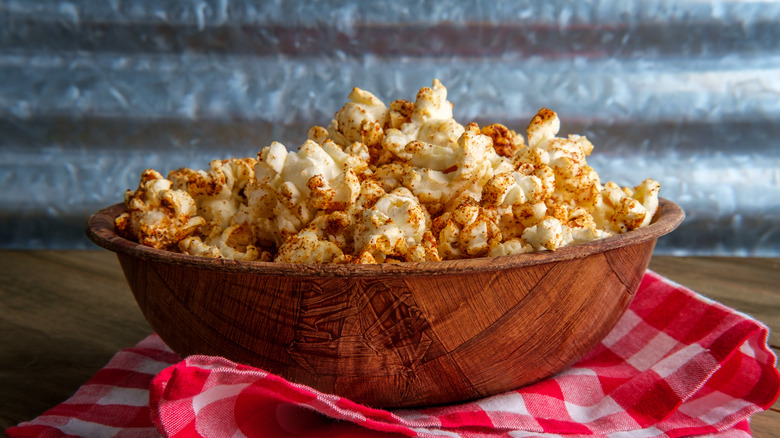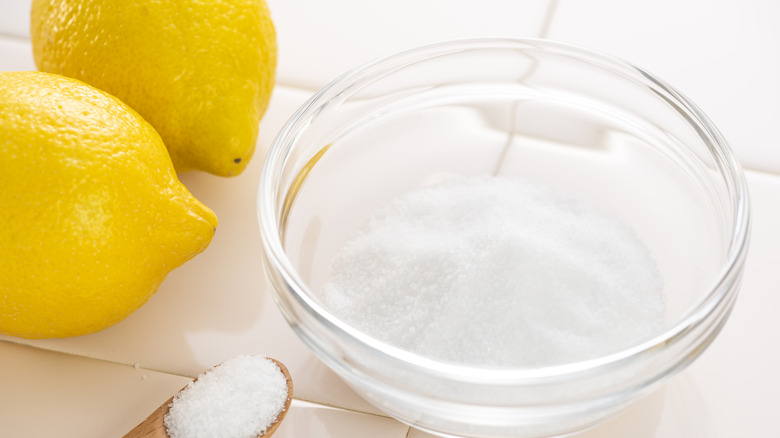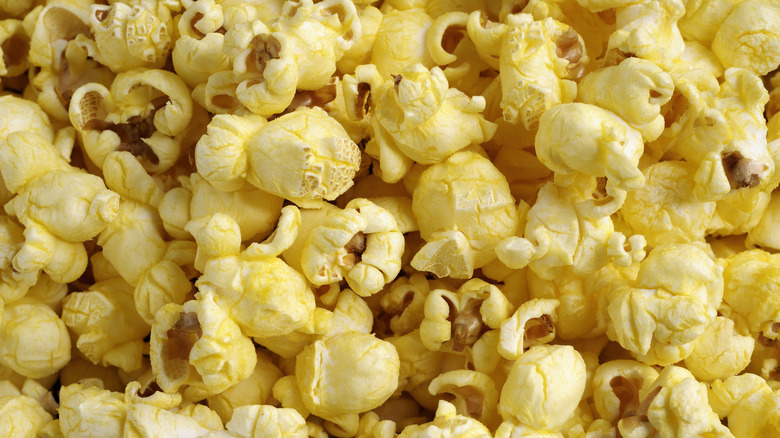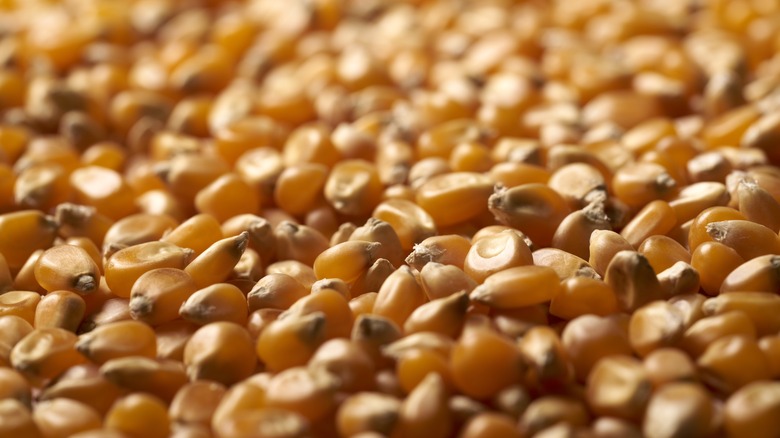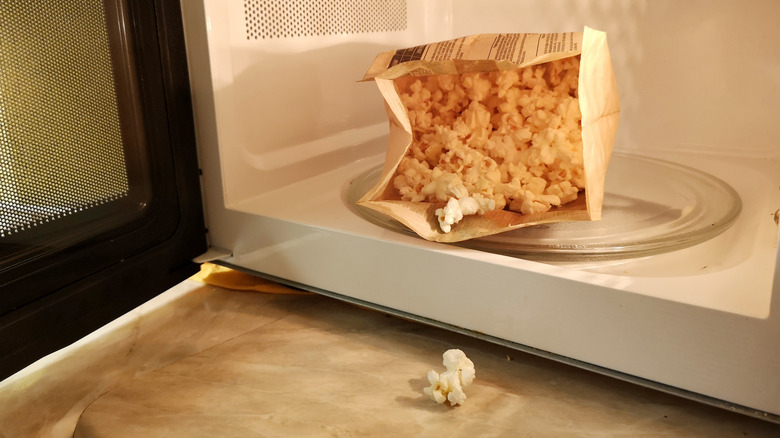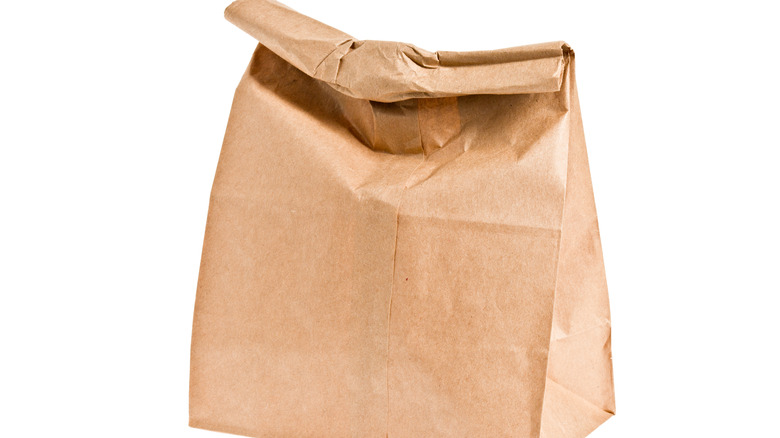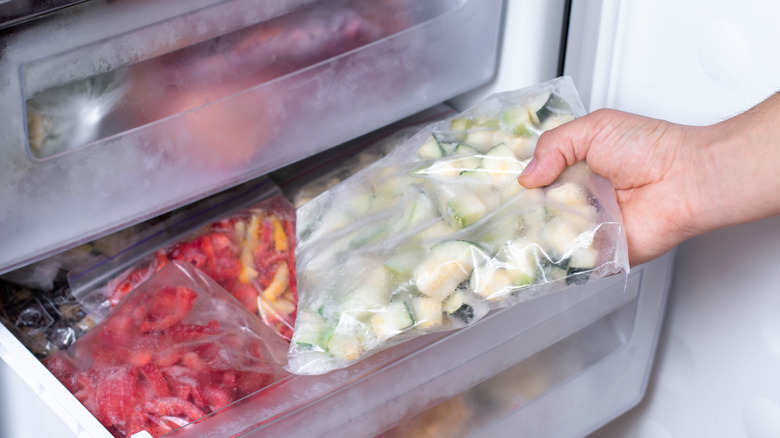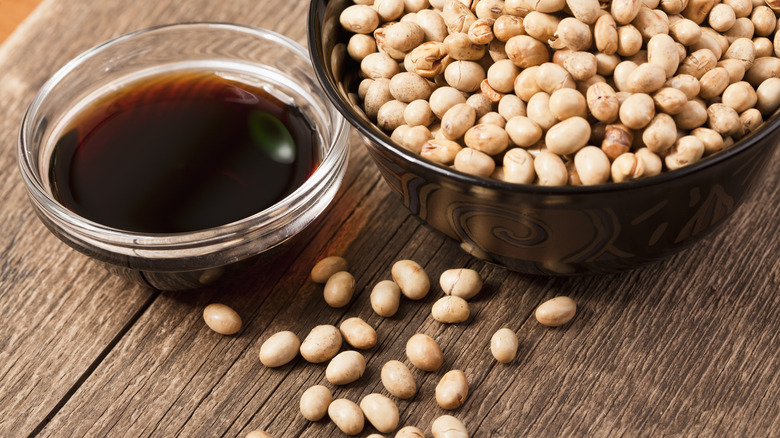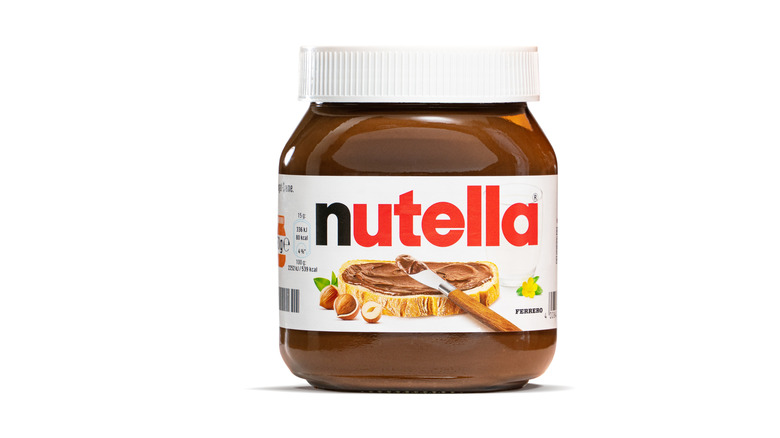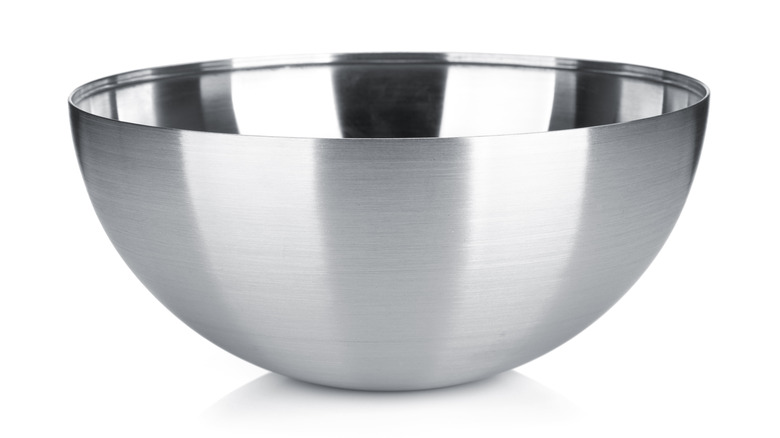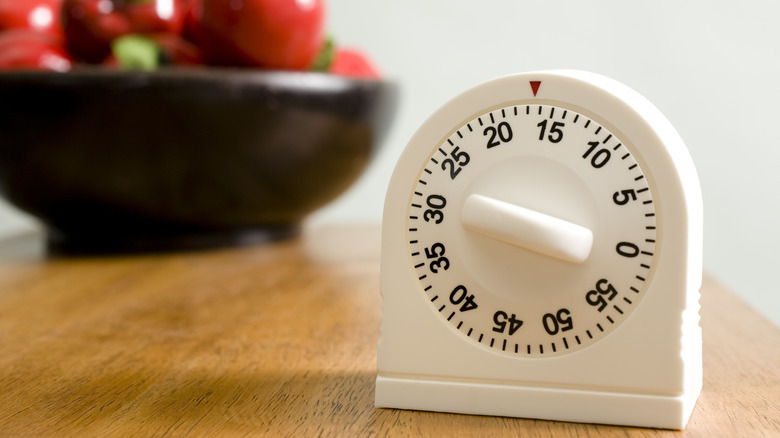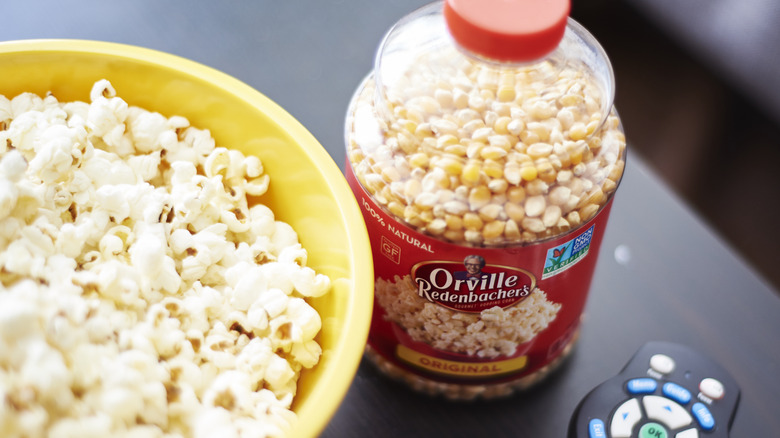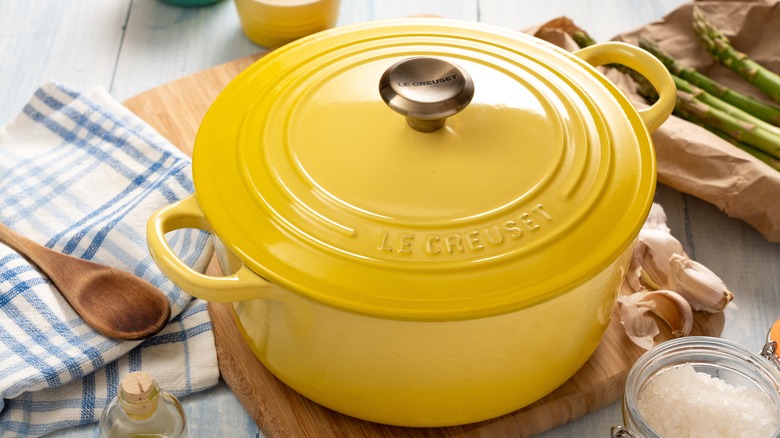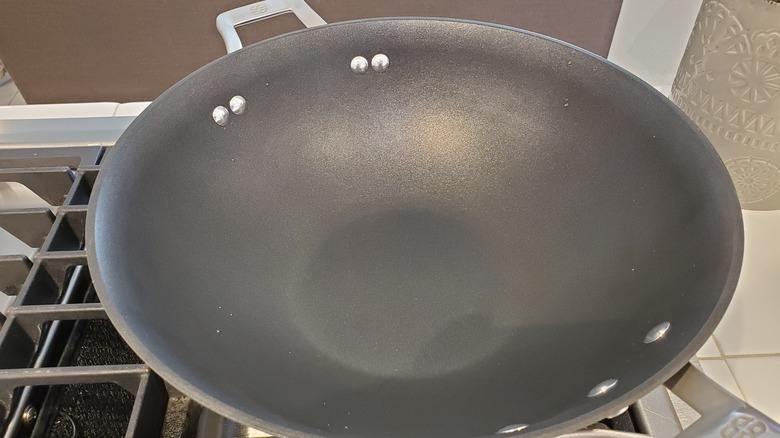15 Tips You Need To Make The Best Popcorn
Popcorn is undoubtedly one of the foods we take for granted in this world. The kernels are light (unlike chips and other snack foods), low in calories, and the perfect mindless food to enjoy as you focus on the characters' development in the film. It's also a portable snack food perfect for road trips, tailgates, and everything in between.
While that overflowing tub of movie theater popcorn always seems to impress (hello, Flavacol), it's easy enough to prepare at home — and for a fraction of the price of what it costs at the concession stand. But there is an acquired level of skill for getting the optimal pop on your kernels and pairing it with the perfect flavors (because, let's face it, plain popcorn just isn't it). We've compiled some of the best tips and tricks for all steps of the popcorn process — from storing your kernels to adding unconventional seasonings.
Drizzle on peanut butter for a gourmet flavor
The best foods are often the ones that you can make gourmet upgrades to with only a few simple steps. For example, if you're looking to take your movie night popcorn to the next level, you should try adding peanut butter to your popcorn. This nutty ingredient will surely change your popcorn forever.
First, you'll want to mix the popcorn with equal parts oil to create a butter replacement. Drizzle the mixture on your popcorn after it's finished popping. To complement the peanut flavor, you can also add other seasonings like salt, pepper, cayenne, or cinnamon. Another alternative is to mix the peanut butter with sugar, honey, salt, and vanilla extract to make a kettle corn-esque seasoning. For the final step, cool the covered popcorn with roasted peanuts. This final addition will make your popcorn more robust and also help keep you satiated for longer.
Integrate salty and sweet flavors
Popcorn: do you like it salty or sweet? We mean it when we say there's no wrong answer here — and would venture to argue that "both" is actually the best response. One of the ways to give caramel popcorn a savory twist is to incorporate spices and seasonings when crafting your caramel sauce with butter, sugar, and cream. This will prove more advantageous than tossing your popcorn in spices like chili powder because it will ensure stickage and evenly distribute the flavors across all the popped kernels. Salt is an exception to this rule; it should be added after the kernels are finished cooking.
Once your savory ingredients have been mixed into the caramel sauce, transfer them to a baking sheet to bake and harden. There's a whole litany of options for savory seasonings, but our favorites include garam masala or finely ground Szechuan peppercorns. You can also opt for miso paste or fish sauce if you want something more complex.
Add a tangy element with citric acid
Though sour is a flavor profile not usually associated with popcorn, you should consider adding some zing to your kernels. But don't go around sprinkling lemon juice on everything yet — especially when there is a much better alternative to harnessing a zesty flavor. Instead, you can take your popcorn to a new level with citric acid.
Citric acid is sold as a white powder derived from the naturally-occurring tangy taste in citrus fruit. Unlike lime or lemon juice, which would otherwise make your popcorn soggy, citric acid helps bring the flavor without any textural demise. We recommend using small pinches of the powder when cooking anything, especially delicate foods like popcorn — a little too much will result in an aggressive tanginess. We further recommend pairing citric acid with lime and lemon zest, such as in Santa Barbara restaurant The Lark's spicy citrus popcorn recipe. The Calabrian chili oil brings a newfound level of heat, which meshes well with the flavorful citric acid and zest.
Skip the butter
What do you mean you shouldn't cook your popcorn with butter? Take it from "Good Eats" host Alton Brown on this one. Brown never recommends butter for popping popcorn because it will burn in the bottom of your cooking vessel — which will, in turn, lead to black, smoldered kernels. Instead of butter, Brown recommends using ghee: clarified butter that has been cooked down to remove its water content. Ghee has a much higher smoke point and will impart the same buttery flavors as your favorite stick of sweet cream. Alternatively, you can use a neutral oil like vegetable, peanut, or canola oil to prepare your popcorn.
Water is the other type of liquid you should never use to pop your popcorn. Even if you're on a momentary health kick, popping your kernels with water will inevitably lead to burnt kernels that don't pop. If you want an oil-free popcorn, you're better off using an air popper.
Try popping regular kernels in the microwave
You might wonder if there is a difference between microwave popcorn kernels and "regular" popcorn kernels (referring to the ones you can buy in a one-pound jar at the store). Turns out the two are the same: small kernels with a layer of water surrounding the starch. When the heat from your microwave, air popper, or stove comes into contact with the water, it steams, pressurizes, and pops. The only significant difference between microwave kernels and regular popcorn kernels is that microwave bags typically contain flavoring.
If you don't have an air popper or a stovetop but have a ton of kernels, you can microwave them just like you would pre-bagged popcorn. You won't need to use oil, either. Simply place ⅓ cup of kernels in a microwave-safe bowl covered with a paper plate and pop until the sound slows down. Remove the plate to allow the steam to escape and then serve your snack with your favorite toppings.
Cook the bag on the correct side
We like to think that many of the warnings on food are suggestive. For example, "don't eat raw cookie dough" sometimes sounds like an invitation. But one rule you should never break when it comes to cooking is to nuke your popcorn bag on the wrong side. There are several reasons why it matters if you microwave popcorn with a certain side up — but likely none of which you would have expected. It's not a fire hazard to microwave popcorn upside-down; it only becomes a fire hazard if you set it and forget it.
The reason why you should microwave the popcorn as directed is to maximize the number of popped kernels. Microwave popcorn bags and other food containers often contain a rectangular material called a susceptor. The susceptor absorbs the radiation from the microwave and causes the bag to heat up faster, which in turn promptly pops the kernels. However, it only works best if its placed underneath the kernels as they pop. Therefore, your kernels will still pop if left upside-down, but you'll likely get fewer popped kernels and more old maids, aka the unpopped kernels left over.
Use a lunch bag for DIY microwave popcorn
If you like microwave-style popcorn without synthetic additives, salts, and oils, you can enlist a common kitchen item to help. Using a paper bag to make microwave popcorn from scratch is an excellent idea because you can eat the popcorn straight from the bag after you finish popping the kernels without it being yet another thing to wash.
All you'll need to make DIY microwave popcorn is half a teaspoon of oil, kernels, salt, and your trusty microwave. Toss all of your ingredients inside your bag and fold the top down so it stays closed. Then, set your microwave on high for two minutes to pop. The exact time depends on the microwave, so it's best to hover near your appliance and listen to the popping rhythm to tell when to shut the microwave off. Roll down the bag and turn on your favorite movie when you're ready to eat.
Store your leftover popcorn in the freezer
The worst part about making air-popped popcorn (besides finding a place in your pantry to store the machine) is the sheer amount of popcorn that the machine makes. So if you go through the laborious process of using an air popper, you will want to make more than just a handful. But then comes the question of how to store all those leftovers.
A simple storage tip to keep your popcorn from going stale is to plan a trip to the freezer. Although this may sound a little strange, it is the most consistent way to maintain the popcorn's moisture levels — which is the factor that causes staleness in the first place. Storing the popcorn au natural in the refrigerator or freezer would cause the kernels to absorb too much moisture. Instead, you should place your popcorn into a freezer-safe bag or container. And since popcorn doesn't really freeze, you can take out your popcorn and enjoy it straight from the freezer when you get hungry.
Consider adding soy sauce to your popcorn
Soy sauce is an ingredient you probably associate more with stir fry than popcorn. But it's the unexpected sauce you should start adding to your popcorn. Soy sauce is full of umami — the same savory flavor profile found in mushrooms, meat, and other ingredients. It doesn't cross the line into artificial like some of the popcorn flavorings and additives do, plus you'll get a much more complex flavor with this particular ingredient.
Like other liquid seasonings, you should refrain from sprinkling soy sauce directly on your popcorn (unless you prefer a soggy snack). Instead, you can make a compound butter or flavored oil by mixing in a scant amount of soy sauce (too much can shift the flavor balance of your popcorn, so it's best to start small). Once you've melted down your oil or butter, you can stir the soy sauce in before tossing it with your popped kernels.
Use Nutella for a decadent movie night treat
Nutella might just take the top spot for our favorite sweet spread — next to cookie butter, of course. It's full of chocolatey, creamy notes with an undercurrent of hazelnuts. In short, this spread is nothing short of delightful.
The flavor and texture of Nutella make it an excellent accompaniment to popcorn. Our Nutella popcorn recipe sets the stage with two bags of popped microwave popcorn. In a separate pan, prepare your caramel sauce by mixing brown sugar, corn syrup, salt, and butter over medium heat. Once the sugar is dissolved, you can add a cup of Nutella, baking soda, and vanilla extract. Then once the mixture is finished cooking, pour it over two-foiled lined trays of popcorn and bake for about 30 minutes until hard to the touch. While you can totally eat this popcorn as-is, we recommend mixing in some chocolate chips and pretzel pieces for a snack experience you won't forget.
Use a stainless steel bowl to make your popcorn
Alton Brown has taken a special interest in the science of making delicious popcorn. During a segment for his show "Good Eats", Brown indicates that a 6-ounce, heavy gauge stainless steel bowl is perfect for popping popcorn. He notes that the concave shape of the bowl causes the oil and unpopped kernels to pool at the bottom (where the heat comes from) while the popped kernels can rise in the bowl and subsequently not burn. Brown also shares that once the bowl has adequately cooled, it can be used to serve the snack.
Brown adds three tablespoons of neutral oil and ultra-fine popcorn salt with his popcorn to the bowl and covers it in aluminum foil. He notes that it is important to poke a few holes in the foil to allow the steam to escape as the popcorn is cooking. Then, Brown turns up the heat on his gas stove and pinches the corner of the bowl with kitchen tongs to shake it (in a process he calls "dancing the popcorn dance") for less than two minutes. He increases the speed of the shaking once the popping subsides to finish the last few kernels. Finally, he removes the cover and dives in. As Brown says, "your efforts will be rewarded" if you make popcorn this way.
Avoid relying on a timer
One of the most critical skills a cook or baker can have is trusting their instincts and identifying doneness through factors besides looking at a clock. For example, you might be able to use your senses to touch cooked rice to see if it's adequately hydrated or smell if your batch of cookies is done baking. When you're making popcorn, you'll need to rely a lot on your sense of hearing to determine if your popcorn is popped and ready to go.
One of the mistakes everyone makes when making popcorn is setting a timer and leaving the kernels on the stove. Not only will this cause you to overcook the popcorn, but neglecting to shake it will cause the kernels to stick and burn. The best trick with popcorn is to listen to it popping. When more than two seconds pass between pops, it is time for you to remove the kernels from the heat.
Always store your kernels at room temperature
Do you remember when we said you should store popcorn in the freezer? Well, that applies to popped popcorn only — not kernels. If you improperly store popcorn, it will cause more moisture to leak from the kernels. In turn, this increases the number of old maids that end up in each batch of popcorn. There is also a risk that these leftover kernels will burn at the bottom of the cooking vessel and cause some unsavory smells in your kitchen.
The best location to store your popcorn kernels is in a cool, dry place like a cupboard or pantry. It is also essential to keep these kernels in an airtight container or jar to prevent moisture encroaching. If properly stored, unpopped kernels can last more than a year. But for optimal freshness, you should pop the kernels within six months to a year after opening.
Avoid using an enameled pot
There are many different gadgets out there for cooking popcorn, with some being better than others. If you're making popcorn on the stovetop, your pan selection will play a significant part in the success of your popcorn-making experience. You should use a sturdy, deep stainless steel pot that can conduct and hold heat easily. A Dutch oven or anything with an enamel finish is not ideal for cooking popcorn because it gets too hot, which can subsequently ruin the finish on the pot.
The size of said pot is equally important as the type of pot you use. You need a vessel that is large enough that the kernels can move around and rise to the top as they finish cooking. If you only venture into small batches of popcorn, a 3-quart pot with a lid is suitable. But for most popcorn enthusiasts, you'll want to venture into the realm of the 8-quart stock pot.
Try popping it in a wok
We're always a fan of making the most out of what's in our kitchen. One tool that tends to be under-appreciated for its utility is the wok. Although its common uses include cooking up stir fries and homemade fried rice, popping popcorn is one of the absolute best uses for the wok. The shape of the wok allows the oil and unpopped kernels to pool at the bottom of the pan while its ergonomic shape makes shaking the popcorn easy. The kernels have greater access to the oil, which helps to improve flavor. It's no wonder we ranked using a wok as one of the top ways to pop popcorn.
To use this method, start by adding a few kernels to the pot with the oil. Then, cover the pot with the lid and cook on medium until the kernels start to pop. Afterward, add the rest of your kernels, turn down the heat, and shake as you normally would with a stock pot. Once the popping ceases, sprinkle your kernels with salt and enjoy!
Static Media owns and operates Tasting Table and Mashed.
